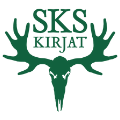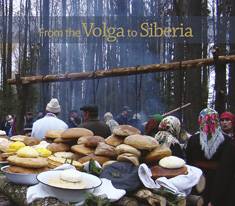From The Volga to Siberia — The Finno-Ugric Peoples in Today's Russia
Lehtinen, IldikoProduktinformation
| Titel: | From The Volga to Siberia — The Finno-Ugric Peoples in Today's Russia | ||
| Författare: | Lehtinen, Ildiko (Redaktör) | ||
| Artikelnummer: | 9789522223463 | ||
| Form: | Mjukband | ||
| Tillgänglighet: | Leveranstid 1-3 vardagar | ||
| Pris: | 24,00 € (21,05 € moms 0 %) | ||
|
|||
| Förlag: | SKS Kirjat |
| Serie: | Suomalaisen Kirjallisuuden Seuran toimituksia 1361 |
| Upplaga: | 1. upplaga, 2012 |
| Språk: | engelska |
| Antal sidor: | 190 |
| Produktgrupp: | Historia SKS:n Toimituksia Books in English |
| Bibliotekssignum: | 91 VÄRLDSHISTORIA. EUROPAS HISTORIA |
| ALLFO - Allmän finländsk ontologi: | alkuperäiskansat, suomalais-ugrilaiset kansat, suomalais-ugrilaiset kielet, volgansuomalaiset kansat, obinugrilaiset kansat, kansalliset vähemmistöt, kielelliset vähemmistöt, kansallinen identiteetti, kulttuuri-identiteetti, etninen identiteetti, kansanperinne, kulttuuriperintö, arki, hantit, komit, marit, mordvalaiset, udmurtit |
From the Volga to Siberia tells about the recent history, current state and national identity of the Khanty, Mari, Komi and Udmurt peoples in present-day Russia. It is a follow up to the book The Great Bear: Old Photographs of the Volga-Finnic, Permian-Finnic and Ob-Ugrian Peoples (Finnish Literature Society and National Board of Antiquities 1980).
The Finno-Ugric peoples of Russia live as minority groups under the pressures of industrialisation, urbanisation and globalisation. Their own language and culture are under threat. In the countryside it is still possible to see the sacrificial feasts of the Mari people, traditional folk costumes and customs dating back to ancient times. The unique picture material in the book comes mainly from the collections of local photographers.
The Finno-Ugric peoples of Russia live as minority groups under the pressures of industrialisation, urbanisation and globalisation. Their own language and culture are under threat. In the countryside it is still possible to see the sacrificial feasts of the Mari people, traditional folk costumes and customs dating back to ancient times. The unique picture material in the book comes mainly from the collections of local photographers.





